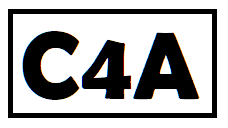Triangle Calculator: Calculate Area, Perimeter, and Angles
Method 1: By Side Lengths (SSS)
Method 2: By Base and Height (BH)
Method 3: By Two Sides and Included Angle (SAS)
Understanding the Triangle Calculator
The Triangle Calculator is a powerful tool designed to help you quickly determine the key measurements of a triangle. Whether you’re a student, professional, or just curious about geometry, this calculator simplifies the process.
Key Features
This Triangle Calculator allows you to input the following sets of measurements:
- Side-Side-Side (SSS): Three side lengths.
- Base and Height (BH): Base and height.
- Side-Angle-Side (SAS): Two sides and the included angle.
Once you enter the appropriate values, the calculator will automatically compute the area, perimeter, and angles of the triangle.
How to Use the Triangle Calculator
To use the Triangle Calculator, follow these simple steps:
- Select the appropriate method (SSS, BH, or SAS).
- Enter the required measurements in the corresponding fields.
- Click the “Calculate” button for the selected method.
- The calculator will display the area, perimeter, and angles of the triangle.
Benefits of Using the Triangle Calculator
There are several benefits to using our Triangle Calculator:
- Accuracy: Get precise calculations every time.
- Convenience: Save time and effort with quick calculations.
- Education: Understand the relationships between different triangle measurements.

Formulas Used in the Triangle Calculator
The Triangle Calculator uses the following formulas:
By Side Lengths (SSS)
Perimeter:
Area (using Heron’s Formula):
Angles (using Law of Cosines):
By Base and Height (BH)
Area:
Perimeter:
Angles (using trigonometric functions):
By Two Sides and Included Angle (SAS)
Area:
Perimeter:
Third Side (using Law of Cosines):
Other Angles (using Law of Sines):
Complex Explanation and Examples
Let’s delve deeper into each formula and provide some examples to illustrate how they work.
By Side Lengths (SSS)
Example: Given sides a = 3 , b = 4 , c = 5 .
Perimeter:
Area (using Heron’s Formula):
Angles (using Law of Cosines):
By Base and Height (BH)
Example: Given base b = 3 , height h = 4 .
Area:
Perimeter:
Angles (using trigonometric functions):
By Two Sides and Included Angle (SAS)
Example: Given sides a = 3 , b = 4 , angle C = 90°.
Area:
Third Side (using Law of Cosines):
Perimeter:
Other Angles (using Law of Sines):
Applications of Triangle Calculations
Triangle calculations have numerous applications in various fields, including:
- Engineering: Designing structures and components.
- Architecture: Planning buildings and spaces.
- Mathematics: Solving geometric problems and proofs.
- Physics: Analyzing forces and motion.
Conclusion
The Triangle Calculator is an essential tool for anyone working with triangles. Whether you need to solve homework problems or perform professional calculations, this tool provides accurate and efficient results. Try it out today and see how it can simplify your work!
Follow us on Facebook for more updates!
Contact us at office@calculator4all.com
